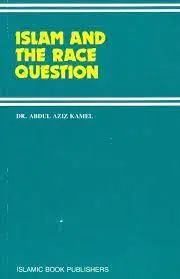Islam and the Race Question (Dr. Abdul Aziz Kamel)
Author: Dr. Abdul Aziz Kamel
Publisher: Islamic Book Publishers (1987)
Pages: 56 Binding: Paperback
Some years ago, I was traveling back from Mecca to Al-Madinah, having made my pilgrimage, an obligation discharged each year by over a million Muslims. They converge from the ends of the earth, speak all tongues, are all colors, perform the same rites and wear the clothes devoid of ornament, so that none can tell the rich from the poor as they answer God’s call to visit His venerable house.
As the car approached Al-Madinah, the minarets and green cupola of the Prophet’s mosque came into view; we entered the city and proceeded towards the mosque to pray. As my eyes wandered over its embellishments, I was struck by the names of the Companions engraved on the walls of the courtyard: Abu ‘Ubaidah; ‘Amir ibn al-Jarrah; Sa’d ibn Abi Waqqas…; these being from Arab tribes. I read on: Bilal ibn-Rabah, an Ethiopian; Salman, a Persian; Suhaib ibn Sinan, a Byzantine (or perhaps he had lived in Byzantium; and next to each of these names was the traditional Islamic invocation: May he be acceptable to God!
This human garland is culled from the great nations living around the Arabian Peninsula at the time of the Prophecy, men who were attached to Islam by its beliefs and laws. They fraternized despite differences in color, and though centuries have elapsed, these names continue to be honored by Muslims and by all who love mankind.
This brotherhood that continues down the ages, the living reality we encounter at the season of the Pilgrimage, is frequently in evidence throughout the Islamic world. The visitor to Al-Azhar, in Cairo, sees students arriving from all over the earth. Each province and nationality has its own gallery, where its students live and work, and throughout the ages these galleries have continued to symbolize the fellowship of human beings gathering together for the noblest aim of all, the pursuit of knowledge. What the visitor sees and Al-Azhar, the oldest of Islamic universities, he will also find in the other universities, he will also find in the other universities, from the farthest point west in the Maghreb to the Pacific, and in the beacons of knowledge that have arisen in the heart of Africa. The same was true, too, of the Islamic universities in Europe.
What we thus find in the world of learning, we also witness in daily life, that regard the mosque and the university as models of what human life should be. It is an attitude that finds aptest expression in the Prophet’s words on the occasion of the Farewell Pilgrimage: ‘O men: You have one Lord, and one Father. You are all issued from Adam, and he from dust. The noblest among you in the sight of God is he who is the most God-fearing.’
Let us therefore attempt to set out the principles which, in Islam affirm the dignity of man and universal human brotherhood, a brotherhood that transcends partisan feelings of race, color, and class.
Der er endnu ikke nogen anmeldelser her. Vi vil være glade for hvis du vil anmelde som den første.





